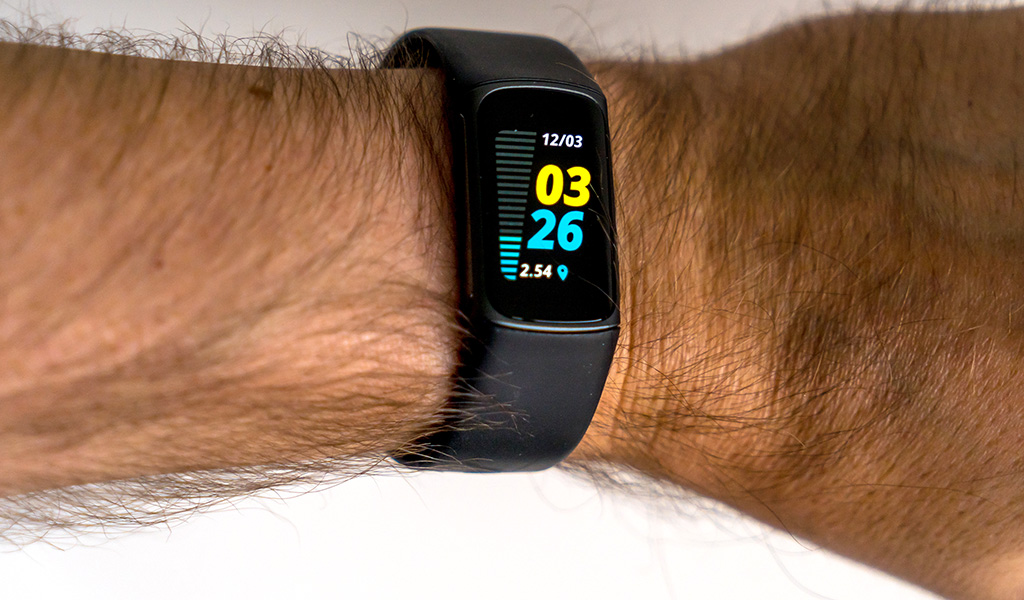
Fitbit continues its penchant for making very good wearables with the Charge 5 activity tracker fitness band, which finally shows some colour.
The Charge 5 marks Fitbit’s design shift in using a colour screen, bringing its activity trackers closer to its smartwatches. It also bridges a functional gap between them when it comes to what it can track. These two elements combine to make this device what it is, but in the end, it also leaves you with a choice to make.
Fitbit Charge 5 design
The colour AMOLED touchscreen changes so much of how the Charge 5 looks and feels. Fitbit previously removed buttons, but it’s touch-only to navigate now. This is actually carrying over from the Luxe, Fitbit’s more recent tracker, though the rubberized strap isn’t dramatically different from past Charge models.
If you’re used to swipe gestures from your iPhone or Android phone, you will learn how it works here. The mix of taps and swipes makes sense once you learn them, especially because the missing buttons open other opportunities. I just didn’t like that it often took more than one swipe to move across the interface.
The sides now have sensors with cool features like the electrocardiogram (ECG) and electrodermal activity (EDA) sensor to gauge stress. That also includes other familiar features we’ve come to know from Fitbit, like a heart rate monitor underneath and SpO2 sensor (for blood oxygen levels). That latter one is interesting because it originally appeared in the Fitbit Sense smartwatch, but you don’t get a skin temperature sensor. The Sense remains the only current Fitbit device with it, where it reads temperature fluctuations in your skin to tell if you’re too high or low within your range.
You also don’t get other smartwatch perks, like voice assistant integration with Alexa and Google Assistant. Not to mention a way to control music playback. Fitbit didn’t see to it to include neat features, like Spotify integration or just basic playback controls.
You do get built-in GPS for much better tracking outdoors, knowing your route when walking, running, hiking or cycling. One drawback is that without an altimeter, you can’t get any data related to elevation, so if you plan to climb or hike a mountain, the Charge 5 won’t tell you the heights you reach.
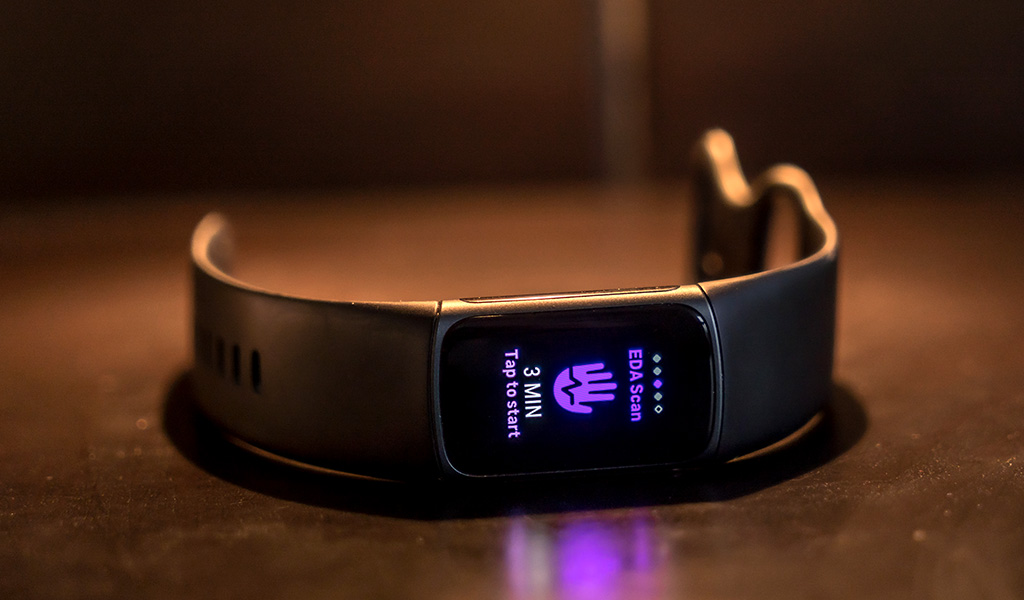
Setup and features of the Charge 5
Despite the familiar look, the Charge 5 moves on from the previous strap design. If you have straps for the Charge 4 (and earlier), you won’t be able to use them here. The Charge 5 uses a different clipping mechanism incompatible with previous models. While I didn’t get a chance to try out other straps this time, they are available in various materials, like silicone, fabric, leather and metal.
It’s easy to set up the Charge 5 through the iOS or Android app, regardless of whether you’re new to Fitbit or replacing an older unit. Certain features, like the ECG, need to activate before you get started, though that’s also simple to do. The colour screen changes up the watch faces, with some nice options to select from.
Previous features, like Active Zone Minutes and the sleep tracking all apply here, as does your Daily Readiness score. Fitbit’s app grew a fair bit over the years, and it shows with its features, though some of that only comes by subscribing to Fitbit Premium.
A consequence of being activity tracker is that apps aren’t always optimized. Or even available, for that matter. Unlike the Sense or Versa watches, the Charge 5 is essentially limited to what Fitbit provides for it. You get your basics, like apps for exercise, alarms, timers, SpO2, ECG, EDA Scan and notifications, and that’s about it.
You can also set up the Charge 5 with Fitbit Pay to use it instead of your card at point-of-sale. It’s still very limited in Canada, with only Vancouver’s transit service and a handful of financial institutions supporting it, all of which stick to credit cards as the only option. While this feature is far more useful in the United States, it’s got a long way to go in Canada.
![]()
Tracking different things
Ironically, the Charge 5 isn’t all that different from its predecessors when it comes to tracking exercise. You can keep up to six as shortcuts, and swap them out between 16 others. Swipe to one on the tracker and start a session with goals, including heart zone notifications, and Active Zone Minutes. You can choose to turn GPS on or off to track route and distance, as well as leave the screen on at all times to see what it’s tracking while active.
It’s pretty much the same in practice compared to previous Fitbit devices, and much happens passively on top. Except that passive stuff needs to work in the right circumstances. And in some cases, you need to actually trigger it.
For example, the EDA sensor has you place your index finger and thumb on the sides for three minutes to read your response. You can do longer scans if you want, but as I noted when I reviewed the Sense, I found the feature worked best with those feeling some stress, anxiety or apprehension. It needs a good five scans just to get a read on you, though 20 is the magic number to tell you whether you’re stressed or not.
To do that, it tallies up a Stress Management score that also brings in activity and sleep data from the Charge 5 to come up with a number. While not required, you could try the Relax app’s breathing exercises, except they’re not available for some odd reason. At least they weren’t on my review unit. As a Premium subscriber, however, I had plenty of breathing and meditation routines I could try out, but as is, there wasn’t anything on the device itself to use.
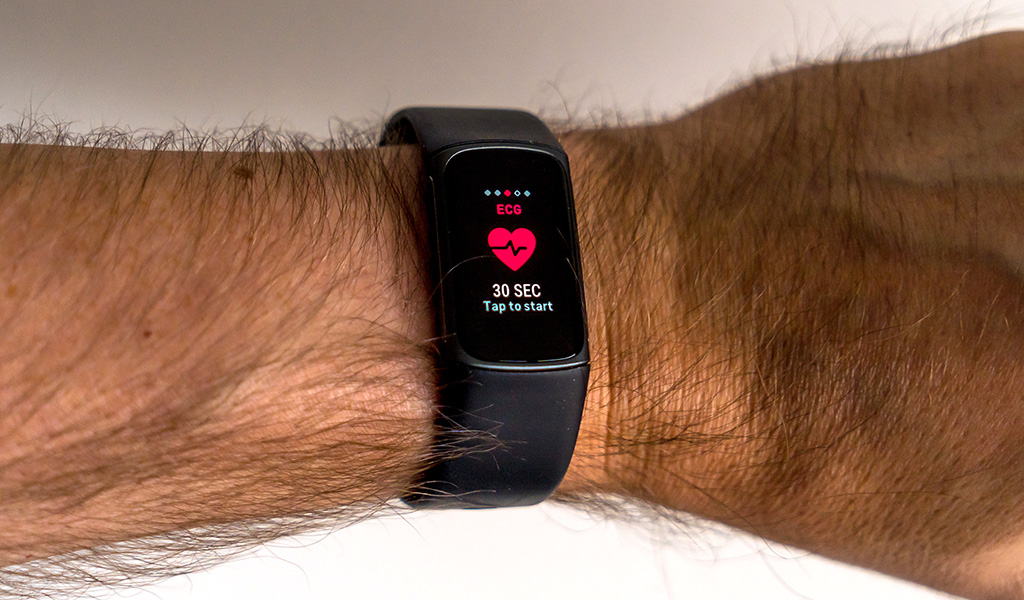
Health tracking with the Fitbit Charge 5
The ECG was a long time coming for Fitbit. While other markets were able to use it on select Fitbit models, Canada lagged behind. Well, not anymore, as the feature runs perfectly fine on the Charge 5. Place your index finger and thumb on the sides for 30 seconds and the ECG app reads your heart rate looking for anything irregular, like an atrial fibrillation. I must stress that this isn’t a replacement nor a stand-in for a proper medical device. I think of it more as an early warning system in case there is something off. Plus, you can always show your doctor the data on the Fitbit app for further assessment.
Anyone with a pre-existing heart condition would surely appreciate having such a handy tool on their wrist. I also see it the same way with the EDA sensor, which did little for me, personally, though I can totally recognize how someone with anxiety might like keeping track of things like that.
The SpO2 sensor works the same as it has on other devices in that it estimates blood oxygen saturation, particularly during sleep. Often times, poor sleep may correlate with a lower SpO2 score, though that’s not always true. Either way, the feature is useful, except that the richer data falls within the Premium subscription. You can still see your sleep score, but you do have to subscribe to get more holistic data.
That brings me back to the Daily Readiness Score. This is every bit an umbrella over your activity (or lack thereof), and could provide interesting food for thought. To get the most out of it, wear the Charge 5 for four days and nights to get started. And then at least 14 days to truly get things going. It at least gives you a clue as to whether your body is up for an active workout or needs time to relax. Again, the Charge 5 can’t predict how you actually feel. But the data may tell you something you hadn’t considered, like not getting enough sleep, as one example.
Health Metrics is another good section within the app. It shows graphs for breathing rate, heart rate variability, skin temperature, oxygen saturation and resting heart rate.
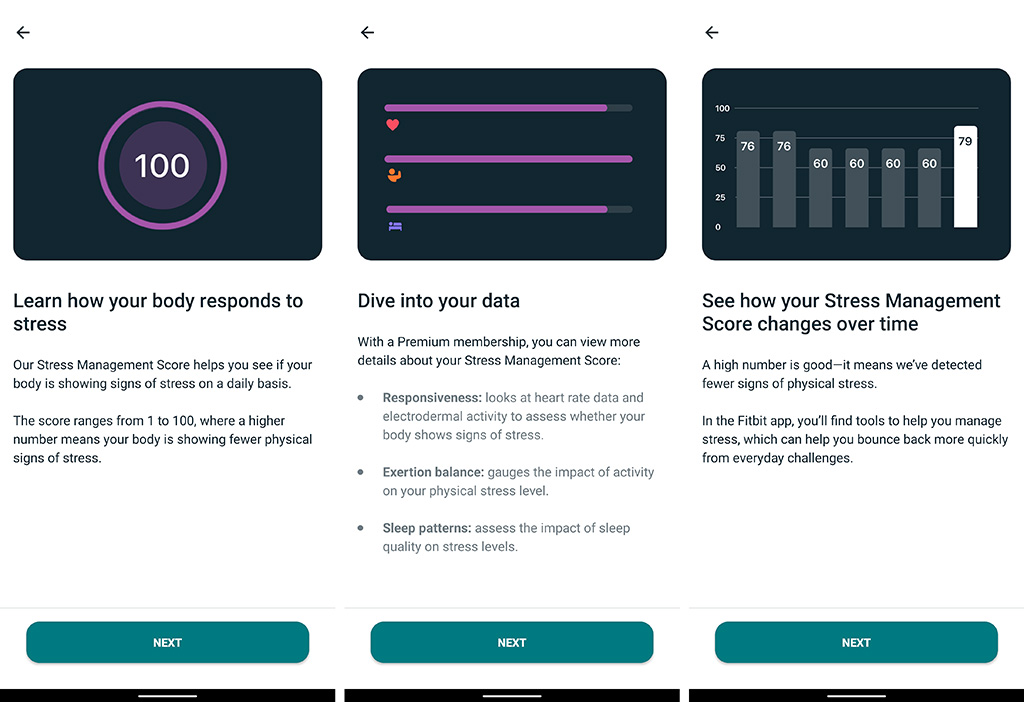
Integration with your phone
I did miss music playback controls wearing the Charge 5, but at least it’s not totally independent of the phone. It can see notifications come in, like an incoming call or text message. You can send a quick reply if you use an Android phone, whereas you can only see the messages if you have an iPhone.
I mentioned there are no apps, and that’s another big difference with smartwatches. If you were looking to have a Starbucks app on here, that’s not happening. Other than watch faces, you won’t be adding much to this tracker.
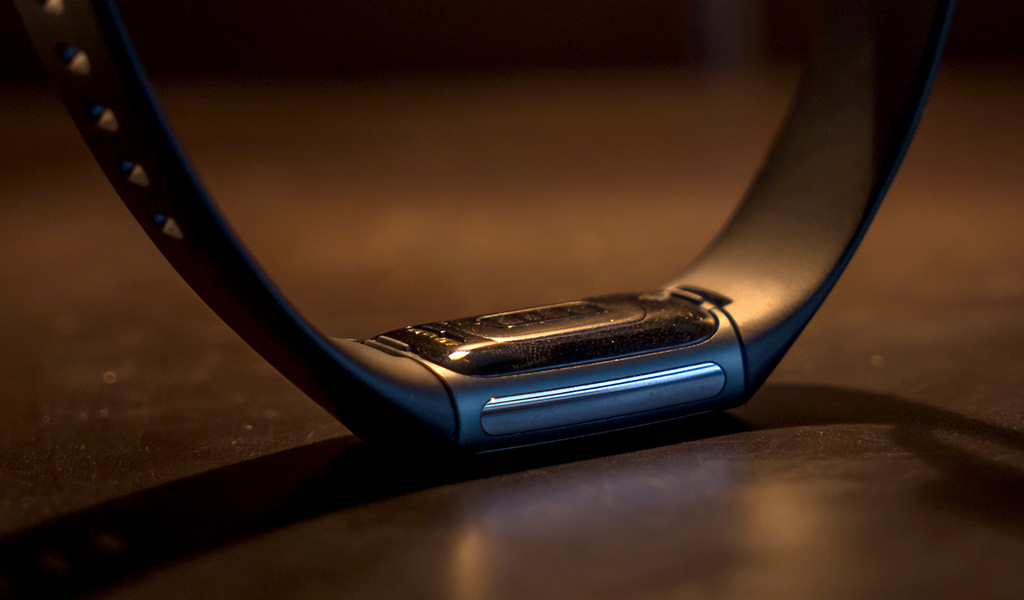
Charge 5 battery life
Fitbit claims the Charge 5 can last up to seven days per charge, but that really depends. The biggest factor is the display. If you always leave it on, you will see battery life drop down to around two or three days. GPS is also a big factor in both directions. Use it often when exercising, and the battery precipitously drops. You can still toggle it on or off from each exercise on the device itself, but it’s just as easy to forget to do it.
Final thoughts on the Fitbit Charge 5
Fitbit conducted a voluntary study in 2020, starting with the Charge 4, that looked to find out if its wearable devices could help detect the onset of infectious diseases in light of the COVID-19 pandemic. You can see the results for that here.
The Charge 5 sets up Fitbit to embrace colour displays and advanced sensory technology in its activity trackers. From here on in, the line between the company’s smartwatches and trackers will increasingly blur. You get an ECG, EDA and all the tracking that comes with Fitbit’s app. You do get way more insight as a Premium subscriber, but as always, you don’t always get context. The ‘why’ over a particular metric or result. Fitbit can’t really tell you right now, which is why I see this as more of a warning system rather than any form of medical care on your wrist. Use it to track exercise and wellness, and you should come away happy with how it does those things.
The Fitbit Charge 5 is available now in black, white and steel blue. All come with large and small size bands in the box.



My favourite feature is the Stress Management Score!
ECG and O2. Sat levels especially of interest because of interesting heart issues here.
I like that it has a stress Management score that adds in activity and sleep data. That is important as it will help me to get better sleep and keep up my fitness goals.
The bold, easy-to-see colours are great!
Love the ECG addition. The more data we can have ready to tell us if something’s amiss the sooner we can get things looked into! A good proactive approach.
I like the on-wrist EDA sensor which provides a daily Stress Management Score showing your body’s response to stress, so you can better understand and take steps to improve your mental health. Sounds great.
I like sleep tracking, GPS, and the battery life.
“Touch only” is neat
I like the sleep tracking feature.
I like the ECG and EDA sensor to gauge stress.
The ECG feature is a game changer for me because I have a medical condition that affects my heart rate and I’ve been looking for the perfect smart watch to help me monitor my health and exercise with peace of mind!
I like that it can last up to 7 days on a single charge. Hate having to charge more than once a week.
The oxygen level monitor is what I think is the most impressive and interesting to me.
I love the bright touch screen display – you can even see it in bright sunlight.
I love the ECG features!
ECG because it is useful
Stress management tracking would be great.
I like the battery life, but also the sleep tracking would be nice to try.
I love that it can track different things and has an Sp02 sensor!
The ECG
I like that it can monitor my sleep patterns
The HR monitor is such a useful feature! That would be my fave.
the electrocardiogram (ECG) and electrodermal activity (EDA) sensor to gauge stress
I really like like that it can measure oxygen saturation levels and the daily readiness feature sounds awesome!
I would say monitoring the heart rate is super important to me! 😀
HR monitor is a feature I like.
The bright touchscreen display that offers an always-on option; so it’s easy to see, even in direct sunlight!
With a hearth condition I can get an ECG, EDA and all the tracking which comes with Fitbit’s app.
Thank you for the opportunity to win
I love the built-in GPS, so when I bike, I can see later the route and how many miles I traveled 🙂
I like the feature to monitor blood oxygen levels so I can see how my workout is impacting me.
The electrocardiogram feature seems interesting
The feature I like is the battery life . I’m terrible for remembering to plug in my devices .
I like to be able to monitor heart rate while running
I like the styles and colors along with the features.
I love the ability to monitor your heart rate during exercise!
Monitoring the heart rate is important to me.
The electrocardiogram (ECG) and electrodermal activity (EDA) sensor to gauge stress is so useful and important to keep track of!
The feature I like most is the battery life, you cant monitor your sleep if you need to charge your watch every night
Monitoring your heart rate during exercise is a great feature!
I like the long battery life so I don’t need to charge it as often.
The built-in GPS is a must have for when we go hiking. We usually take known hike paths but sometimes it is also nice to take the road less travelled.
Battery is key because I can wear it longer
Battery life is key because I can wear it longer
The feature of Fitbit Charge 5 I like the most is the increased battery life that can last up to seven days. I like that feature because I tend to forget to charge my smart watch and this will allow me to use it for longer periods of time.
I love the Daily Readiness Score feature!
I really like the ecg features.
Battery life is a big feature I like. This last way longer than Apple/Samsung watches.
Integration with your phone is important for me.
The battery life is great
The feature I like the most is the battery life.
Comments are closed.